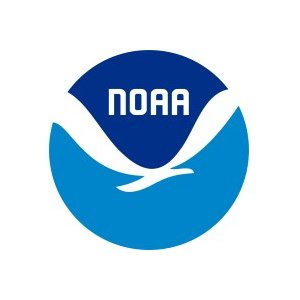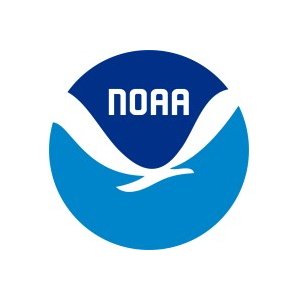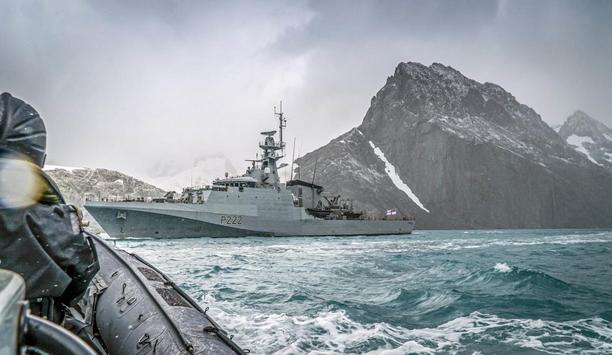NOAA - Experts & Thought Leaders
Latest National Oceanic and Atmospheric Administration news & announcements
Vestdavit has achieved a new sales record for the third successive year as its order intake hit an all-time high of Nkr380m in 2024, fuelled by increased davit orders from its core naval market, as well as the offshore energy sector. New sales record "It has been another fantastic year," says Vestdavit’s Sales and Business Development Director - Tarjei Isaksen. Tarjei Isaksen adds, "The significant orders boost was achieved despite a transition in our Sales & Marketing department that saw us start the year with an almost entirely new sales team, which hit the ground running to deliver impressive growth through quickly developing good customer relations." Naval and offshore market The naval market accounted for about 80% of orders in terms of value, with the remainder coming mainly from offshore The company’s davit sales grew by around 17% versus 2024, while the volume of orders also rose to 108-plus units, an increase of more than 50% from 70 in 2023. The naval market accounted for about 80% of orders in terms of value, with the remainder coming mainly from offshore energy - both oil & gas and wind. High-value davit contracts Furthermore, the leading Norwegian supplier of boat-handling systems also racked up some of its biggest-ever orders in terms of value with contracts in the range of Nkr40-60m. These include frame agreements for multiple davits with the Canadian Coast Guard and French Navy, as well as significant orders with the US, German, and Italian navies, and the US National Oceanic and Atmospheric Administration. "Increasing sales momentum in our main markets has led to exponential growth in recent years to underpin the expansion of our fabrication facility in Poland that enables faster turnaround on orders to boost productivity and meet growing demand," explains Tarjei Isaksen. Expansion in capacity The Bergen-based supplier has recently expanded the Vestdavit Production plant with a new assembly hall to increase manufacturing capacity by 60-70%, which will facilitate delivery of around 100 davits annually and allow construction of larger units. Tarjei Isaksen says Davit sales growth is mainly being driven by increasing newbuild investments by Nato navies around the world to strengthen their fleets amid escalating geopolitical tensions. He states, "This has led to rolling orders for long-term newbuilding programmes," with the US Navy a major customer. Tailored to military requirements Vestdavit has established a strong reputation as a specialist supplier of bespoke boat handling systems Based on a market study, the company is now looking to expand further into the Asia-Pacific naval market where it sees 'huge potential', as well as in Latin America, according to Isaksen. Vestdavit has established a strong reputation as a specialist supplier of bespoke boat-handling systems to most Nato navies based on its 50-year track record of delivering robust and reliable davits designed for efficient launch-and-recovery operations in variable sea states for mission-critical operations. Lightweight, compact, and resilient Its high-specification davits are installed on both naval and coastguard ships ranging from aircraft carriers to offshore patrol vessels to deploy various craft for military, law enforcement, and other tasks, with a reference list that includes the US, British, Italian, and Australian navies, to name a few. These are designed to meet the special requirements of military vessels for boat-handling systems that are lightweight, compact, and resilient, with a high level of redundancy so they can remain operational under challenging conditions. Offshore wind in sales Vestdavit has seen increasing deliveries to the offshore wind segment due to demand for heavy-duty davits Innovative technological features - such as active heave compensation, anti-pendulation mechanisms, and flexible hook distance - also enable enhanced boat-handling capabilities and increased adaptability. On the commercial side, Vestdavit has seen increasing deliveries to the offshore wind segment due to demand for heavy-duty davits to handle large workboats used for the deployment of turbine maintenance crews, mainly on construction service operation vessels (CSOVs). Green energy transition Isaksen expects this trend to continue given the pace of wind farm development worldwide to drive the transition to green energy, with annual installations forecast to increase to 66 GW by 2033 from 10.8 GW in 2023 despite recent investment challenges, such as inflation, high interest rates and supply chain constraints that have stalled some projects, according to the Global Wind Energy Council. Against this market backdrop, Isaksen is confident that Vestdavit can exceed the Nkr400m mark to achieve a new sales record in 2025, with further high-value Davit orders on the horizon.
Kongsberg Discovery and Kongsberg Maritime have been chosen as the exclusive suppliers of marine scientific equipment, oceanographic handling systems, and deck machinery for two new National Oceanic and Atmospheric Administration (NOAA) charting and mapping vessels, the Surveyor and Navigator. The vessels are being constructed by Thoma-Sea Marine Constructors, a shipbuilding company based in Louisiana, USA. Ships feature The ships feature an advanced array of technology from Kongsberg Discovery to map, monitor, and safeguard the marine environment, supporting mariners, commerce, and aquatic life. Kongsberg Maritime's state-of-the-art oceanographic handling, anchoring, and mooring systems are incorporated into the design of the new vessels to enhance their operational efficiency and performance. Mission critical role The Surveyor and Navigator mark the next generation of NOAA multi-mission platforms With launch dates of 2027 and 2028, the Surveyor and Navigator (contracted at a combined value of USD 624.6 million) mark the next generation of NOAA multi-mission platforms, with a primary mission of hydrography utilising the latest technology for mapping and characterising the United States Economic Zone. Kongsberg Discovery has a key role to play. Integrated package of solutions Kongsberg Discovery US, the US office of the Norwegian technology company Kongsberg Discovery A/S is delivering an integrated package of solutions, including state-of-the-art sonars for high-resolution ocean mapping from coastal waters to full ocean depth: EM 2040 and EM 304 multibeam echo sounders, SBP 29 sub-bottom profilers, and EK 80 split beam echo sounders. When used together, these systems provide the ability to collect high-quality bathymetry and seabed backscatter, deep penetration high-resolution sub-seabed structure; and water column structure and calibrated backscatter, which allows for the study of physical phenomena, biomass concentration, and migration, as well as detect seafloor gaseous anomalies like methane seeps. Unlocking ambition "It is truly an honour to be selected for these trailblazing ships, which will have such an important role in serving the nation for decades to come," comments Meme Lobecker, Technical Sales Manager, Kongsberg Discovery, adding, "Our technology has been developed to deliver outstanding results in the most demanding conditions, unlocking true understanding of the ocean depths for the good of society, security, and the environment." Kongsberg Discovery innovations Meme Lobecker continues, "As such, this contract encapsulates the core of our purpose, demonstrating how Kongsberg Discovery innovations help customers meet their most ambitious objectives. We’re delighted to have been chosen as a trusted scientific supplier and integrator by both NOAA and the team at Thoma-Sea Marine Constructors." Significant project The delivery of a complete integrated scientific handling system enabling safe and efficient operations Kongsberg Maritime’s contract, worth 123m NOK (USD 11.25m) for the two ship programmes, signed with Thoma-Sea, includes an option to supply two further vessels. The supply contract will see the delivery of a complete integrated scientific handling system enabling safe and efficient operations with cables up to 5,000 metres in length. The scientific winch system comprises two Hydrographic winches, one Brailing winch, and a comprehensive arrangement of sheaves for cable routing between units. Overboard handling units The delivery also includes overboard handling units: one Stern A-frame and one CTD Handling Gear, including a common Hydraulic Power Unit (HPU), as well as Main- and store cranes. The control system, fully developed and maintained in-house by KONGSBERG, features KONGSBERG’s proprietary predictive active heave compensation (AHC) algorithm providing accurate winch system response matched to vessel motion, by aid of KONGSBERG’s motion reference unit (MRU). Kongsberg Maritime is also supplying the anchoring and mooring systems for both vessels. Mission-critical technology "We are delighted to have been selected by NOAA and Thoma-Sea Marine Constructors for this significant project," said Aileen Kehoe, VP of Sales – Special Vessels – Navy, at Kongsberg Maritime. Aileen Kehoe adds, "Kongsberg Maritime supplies a wide range of mission-critical technology to many of the world’s most advanced oceanographic research ships, and we’re delighted to have been selected for these two latest vessels which will carry out essential scientific research duties for the USA." Future focus The ships will primarily focus on ocean mapping and nautical charting, acquiring, and processing large data sets Once operational, the ships will primarily focus on ocean mapping and nautical charting, acquiring, and processing large data sets to help mariners navigate US ports and harbours. Further missions will include collecting data for oceanographic monitoring, research, and modeling activities while supporting coastal resource management and the nation’s blue economy. Underwater robotics and sensor technology "Creating the nation’s nautical charts is one of NOAA’s oldest responsibilities," said Sin Suen, Program Manager for NOAA Marine and Aviation Operations, adding, "These new vessels will carry on that mission and having the latest technology and systems aboard is critical to their success." Kongsberg Discovery launched as a standalone business in April 2023, building on decades of experience within KONGSBERG to create a market leader focusing exclusively on cutting-edge underwater robotics and sensor technology.
Florida’s Lake Worth Drainage District (the District) is a case study in maximising the potential of SmartCover’s remote monitoring technology by leveraging satellite communication. The District provides comprehensive flood control, water conservation and water supply protection for 13 municipalities, serving more than 750,000 residents. The District monitors and controls a complex system of approximately 500 miles of canals, 20 major water control structures and numerous minor structures across over 200 square miles – a daunting task given the potential for large storm events and the physical extent of the District. SmartCover’s remote monitoring The increasing severity of hurricanes and heavy rains have contributed to greater sewer overflows The increasing severity of hurricanes and heavy rains have contributed to greater sewer overflows; damaging property, harming the environment, and impacting public health. The District looked to enhance their sewer intelligence with real-time visibility into the status of their underground infrastructure, to protect the public health of the residents in the face of extreme weather events. MetOcean and SmartCover joined forces to provide real-time satellite monitoring that enabled them to gain uninterrupted visibility of their infrastructure and protect the surrounding environment. By leveraging the Iridium satellite network, SmartCover’s remote monitoring technology helped the District prevent sewer spills during one of the most severe weather events to hit southeast Florida. SmartCover SmartCover’s industry-pioneering analytics include a comprehensive dashboard with alarms and notifications that monitor systems continuously 24 hours per day, seven days per week. It is also the only North American sewer monitoring company utilising the Iridium satellite network. SmartCover has cumulatively acquired more than 15,000 years of data to provide robust and reliable data acquisition and alarming functions. The built-in event management platform integrates localised weather and tidal data from the National Oceanic and Atmospheric Administration (NOAA) as well as USGS stream data to help respond to issues before they become environmental, financial and public health emergencies. The Iridium network Iridium LEO network uses L-band frequencies to share with its users as these frequencies are more resilient In order to protect its residents, the District deployed SmartCover monitoring technology to gain a combined system-wide view of their canal status, as well as rainfall intensity and duration. SmartCover’s industry-pioneering analytics, alarms, and notifications utilise the Iridium satellite network, guaranteeing reliable connectivity even during power and cell outages. Powered by a sophisticated global constellation of 66 cross-linked Low Earth-Orbit (LEO) satellites, the Iridium satellite network provides a web of coverage that encompasses the entire planet. The Iridium LEO network uses L-band frequencies to communicate with its users as these frequencies are more resilient to weather, providing reliable communications even in adverse conditions. In space, an Iridium satellite is linked up to four others – creating a dynamic network that routes traffic among satellites to ensure data is transmitted at the fastest possible speeds, no matter what happens on Earth or in orbit. In 2019, Iridium completed the $3 billion Iridium NEXT mission, which completely replaced the first-generation Iridium constellation and set the foundation for Iridium to meet the growing demand for global communications around the world. The unparalleled reach, high coverage and high dependability of the Iridium network meant that users could rely on critical communication lines to work when they need it most – such as during a Category Five hurricane. Hurricane Irma SmartCover technology utilising satellite contacts was put to the test during Hurricane Irma The SmartCover technology utilising satellite communications was put to the test during Hurricane Irma in September of 2017. Hurricane Irma was the strongest storm on record to exist in the open Atlantic region, and the combined effect of storm surge and tide produced maximum inundation levels of 4 to 6 ft above ground level for portions of Miami-Dade County in southeastern Florida. The SmartCover units utilised the Iridium satellite network to constantly communicate the dynamic conditions within the District’s flood control infrastructure. This, along with the integration of NOAA rainfall information, regional radar data and tidal information, worked in conjunction with the District’s remote-control SCADA system to limit the risks to home damage as well as other environmental risks due to potential sewer overflows. Adaptive stormwater system The use of the Iridium satellite network revolutionised the District’s response time, allowing changes in conditions to be monitored in real-time, with full visibility from the satellite network, reducing the uncertainty around the conditions in the flood control network. This adaptive stormwater system allowed the District to operate with no interruption in service before, during, or after Irma – a feat that could not have been accomplished with standard mobile technology. This constant visibility resulted in no sewer spills, protecting the public health of the District’s residents and enhancing the resiliency of the utility.





